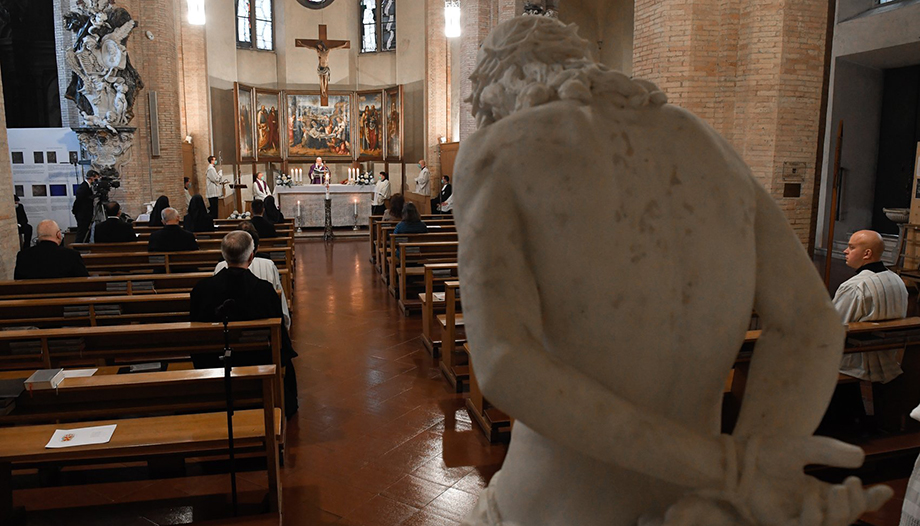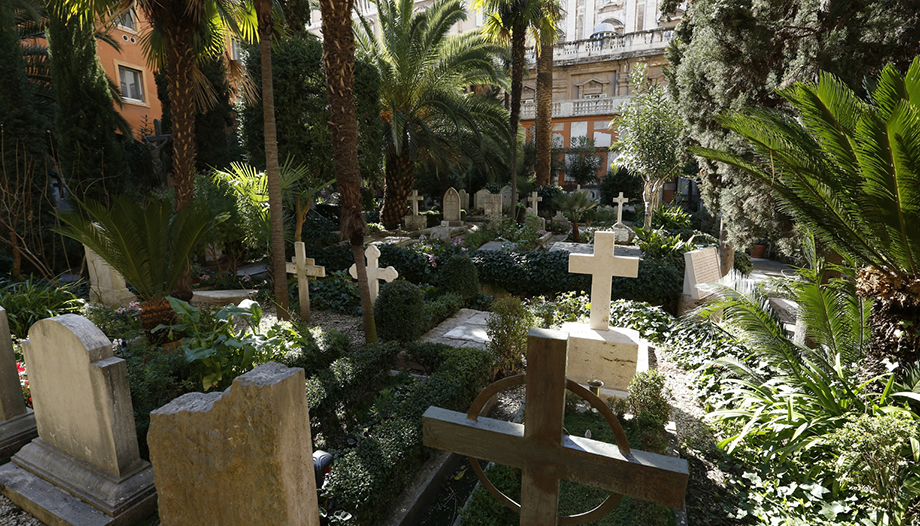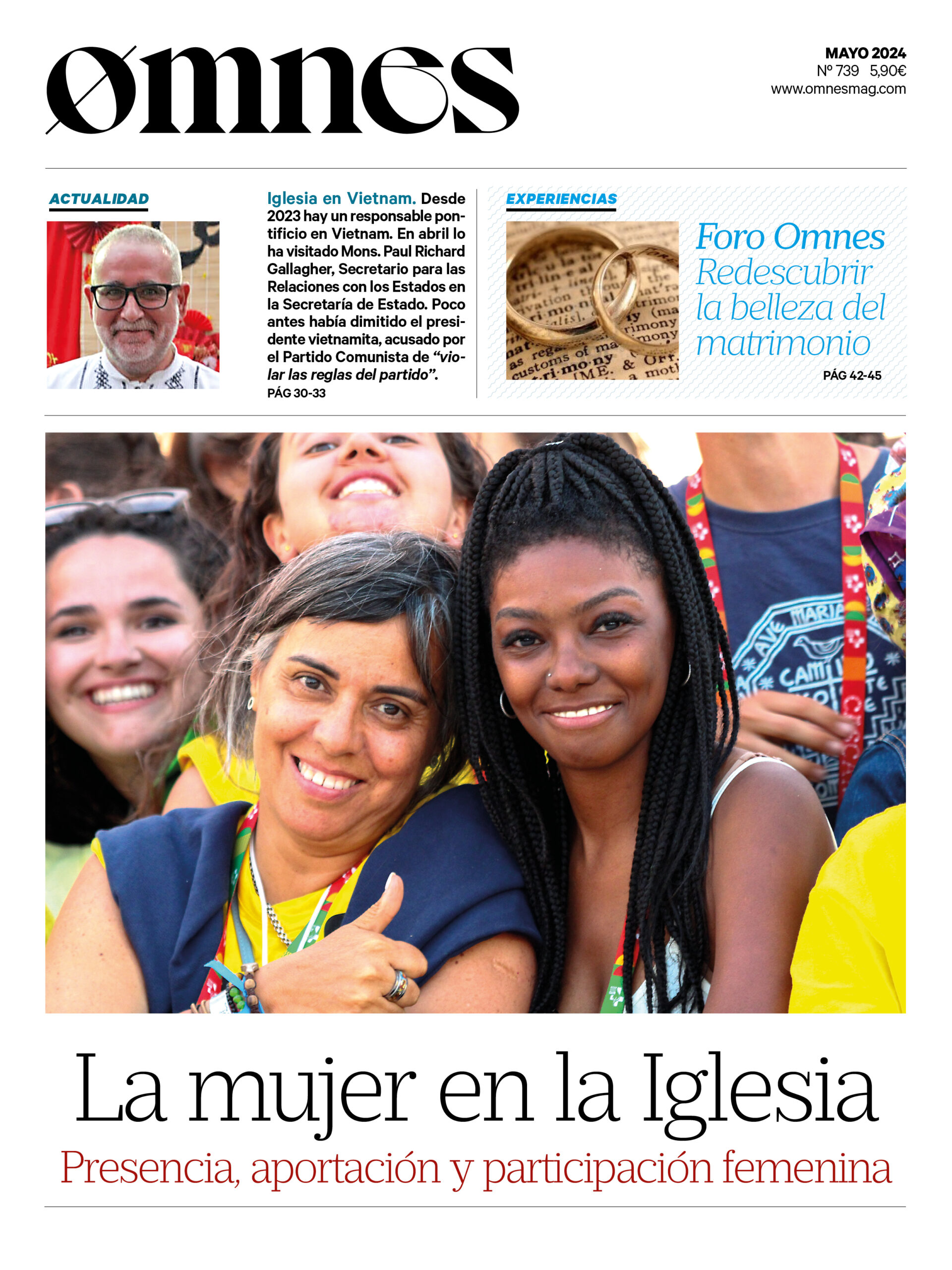The Campo Santo Teutonico (and of the Flemish, as it is officially called) not only houses the "German" cemetery in Rome, completely walled, but also a series of associated buildings. Its history dates back to the time of Charlemagne, when Pope Leo IV donated this land to the Frankish king on the occasion of his imperial coronation in Rome at Christmas 800.
Charlemagne established the "Schola Franconia" in Rome, one of the many regional organizations that offered lodging to pilgrims and compatriots from a particular region or linguistic area and that were spread throughout the city and, in particular, in the vicinity of St. Peter's Basilica. This Schola soon merged with the cemetery that had existed within the Vatican walls for German-speaking pilgrims since the end of the 8th century.
It is important to note that to speak of "German" language in the 8th and 9th centuries is anachronistic, since the "Franks", the origin of Charlemagne's kingdom and empire, in those centuries were spread over most of the current territories of France, Germany, Belgium, the Netherlands and northern Italy (former Langobard kingdom). Therefore, the term "Teutonic" is more precise, including not only the present-day Germans (tedeschi in Italian, tudesco in Old English), but also all those living in the historical German-speaking cultural area; in turn, the Italian term "fiamminghi" includes the present-day Flemish and Dutch.
In any case, the close relationship between "Germans" and Rome began, which was to be continued when, after the division of the Carolingian Empire into three kingdoms by the Treaty of Verdun in 843, the East Frankish kingdom - under the so-called Ottons - became the Holy Roman-Germanic Empire at the beginning of the 10th century: with Otto I (king from 936, emperor from 962) begins the tradition of the German king being crowned by the Pope as emperor of the (Holy) Romano-Germanic Empire, a tradition that would last until 1530: Charles V (Charles I of Spain) was the last German king to receive the imperial crown from the hands of the Pope, although the coronation took place in Bologna and not in Rome.
XIV - XVI Century
The institution of the "Teutonic Holy Field" included not only the cemetery, but also a church and adjacent buildings. However, during the Western Schism (1378-1417), the complex suffered significant damage. Only in the mid-15th century did Friedrich Frid, a native of Magdeburg, revive the tradition of burying German pilgrims in the Teutonic Holy Field and repairing the existing buildings.
He gathered around him a group of German and Flemish helpers, which prompted the founding of a Brotherhood of the Poor Souls in 1454, focused on providing a dignified resting place for pilgrims, as well as the Christian commemoration of the deceased, the maintenance of ecclesiastical service, the care of pilgrims and the care of needy and sick compatriots.
The land belonging to the canons of St. Peter's was transferred to the brotherhood. The present church of Santa Maria della Pietà was consecrated in the jubilee year of 1500. In 1579, Pope Gregory XIII elevated the confraternity to the status of Archconfraternity of the Sorrowful Mother of God in the "Campo Santo dei Alemani e Flemish".
XIX - XX Century
When, in the 19th century, numerous non-ecclesiastical hostels began to appear in Rome, the need for pilgrim hostels ceased to exist, at least to the same extent as before. The question of a modern use of the "Campo Santo" thus arose. At the same time, Christian archaeology became a scientific discipline and experienced a considerable boom. In addition, with Prussia's Kulturkampf (or "cultural battle") against Catholicism, Rome became a refuge for German clergymen who could not work in the German Reich.
In 1876, the College of Priests was founded in Campo Santo as a study center with library and paleochristian collection under the rectorship of Anton de Waal (1873-1917). A few years later, in 1888, the Roman Institute of the Görres Scientific Society was also established there. The buildings occupied by both institutions were made available free of charge by the Archconfraternity. With the foundation of the Vatican State in 1929 by the Lateran Treaties, the Campo Santo enjoys extraterritorial status. In 1943/44, during the German occupation of Rome, about 50 people found refuge there.
After World War II, the Archconfraternity, the Priests' College and the Görres Institute resumed their long-standing cooperation. The Campo Santo experienced a rapid boom, which was reflected in a large-scale renovation and expansion of the buildings in the 1960s and 1970s. Under the long rectorship of Erwin Gatz (1975-2010), who was also director of the Görres Institute, a phase of institutional consolidation and academic profiling began.


The Teutonic Holy Field today
Today, in addition to the completely walled "German cemetery", the "camposanto" houses the church of Santa Maria della Pietà, seat of the Archconfraternity of Our Lady of Sorrows (Mater Dolorosa) of the Germans and Flemish, owner of the Teutonic Holy Field, as well as the Pontifical College of German Priests and the Roman Institute of the Görres Scientific Society.
Although it is the only cemetery within the walls of the Vatican City and is located right next to St. Peter's Basilica, it is not part of the Vatican but of the Italian territory: the Lateran Treaties of 1929 made it an extraterritorial possession of the Holy See. However, it is only accessible through Vatican territory.
Both the cemetery and the church of the Teutonic Holy Field You can attend every day from 9.00 a.m. to 12.00 noon (except on Wednesdays, during the papal audience). It is also possible to attend the Holy Mass celebrated in the church -except in August- every day at 7.00 a.m. (on Sundays, at 10.00 a.m.).












